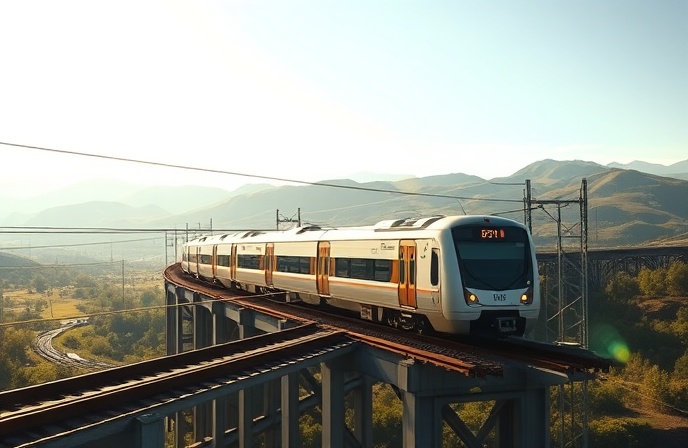Hydrogen Train: JR East, Hitachi, & Toyota’s Green Revolution

The Development of Hydrogen-Powered Railway Vehicles: A Collaborative Effort
This article explores the innovative collaboration between East Japan Railway Company (JR East), Hitachi, and Toyota Motor Corporation to develop and implement hydrogen-powered railway vehicles. The project represents a significant step towards a more sustainable and environmentally friendly transportation system, leveraging the expertise of leading companies in railway technology, energy production, and automotive engineering. The development and subsequent testing of these vehicles highlight the potential of hydrogen fuel cell technology in addressing the growing concerns surrounding carbon emissions within the rail industry. This analysis will delve into the technical aspects of the project, the collaborative approach taken by the participating companies, the anticipated operational performance of the vehicles, and the broader implications for the future of railway technology and sustainability initiatives. We will also consider the challenges and potential hurdles associated with the wider adoption of hydrogen fuel cell technology in the rail sector, examining both the technological and infrastructural considerations involved.
Technological Integration and System Design
The core of the project lies in the seamless integration of cutting-edge technologies from different sectors. JR East, a leader in railway system design and operation, is responsible for the overall train carriage design and manufacture, creating the Hybari vehicle. This includes the integration of the power system developed by Hitachi and Toyota into the existing rolling stock framework. Hitachi, renowned for its expertise in railway electrical systems, is developing the hybrid drive system. This system manages power distribution from both the hydrogen fuel cell and the onboard battery, optimizing performance and efficiency. Critically, Hitachi’s role ensures the safe and reliable operation of the train’s electrical components, which are a critical aspect of all rail operations. Toyota’s contribution is the development of the hydrogen fuel cell device itself, harnessing their extensive experience in fuel cell technology, initially developed for the automotive sector. This demonstrates the transferability of technological advancements across industries and the potential for cross-sector innovation.
Operational Capabilities and Testing
The resulting two-car Hybari test train is designed to achieve a maximum speed of 100 km/h (62 mph) and boasts a driving range of up to 140 km (87 miles) on a single hydrogen fill. These specifications are crucial in assessing the viability of hydrogen fuel cell technology for regional railway operations, where longer range and speed are practical requirements. The testing phase, scheduled to commence in March 2022 on the JR East Tsurumi and Nambu Lines near Tokyo, will be vital in gathering operational data and evaluating the performance of the entire system under real-world conditions. This includes rigorous testing of acceleration, braking, energy consumption, and system reliability under varying loads and environmental conditions. The data collected will inform the refinement and optimization of the technology before commercial rollout.
Economic and Environmental Considerations
The estimated cost of $38 million for the development of the test train underlines the significant investment required for innovation in this sector. However, the potential long-term benefits in terms of reduced emissions and improved environmental sustainability could outweigh the initial costs. Hydrogen fuel cells produce zero tailpipe emissions, significantly reducing the carbon footprint of rail operations. While the production and distribution of hydrogen itself has environmental implications, ongoing research and development are focused on making this process more efficient and sustainable. The success of this project will also influence the broader adoption of hydrogen fuel cells in other transportation sectors, demonstrating the scalability and applicability of the technology.
Conclusion
The collaboration between JR East, Hitachi, and Toyota marks a pivotal moment in the evolution of railway technology. The development of the hydrogen-powered Hybari train represents a significant step towards a more sustainable transportation future. By combining expertise in railway engineering, energy systems, and automotive fuel cell technology, the project successfully demonstrates the potential of hydrogen fuel cells for powering regional rail lines. The testing phase will be crucial in validating the technical and operational feasibility of the system and evaluating its performance under real-world conditions. The success of this project could have far-reaching implications for the broader adoption of hydrogen technology within the rail sector and other transportation modes, paving the way for a cleaner and more environmentally friendly transportation system. However, the commercial viability will depend on various factors including the cost of hydrogen production and distribution, the development of robust refueling infrastructure, and government policies to support the widespread adoption of hydrogen-powered vehicles. The ongoing success hinges on continued innovation, overcoming technical challenges and ensuring the economic viability of this transformative technology for the future of rail transport.





